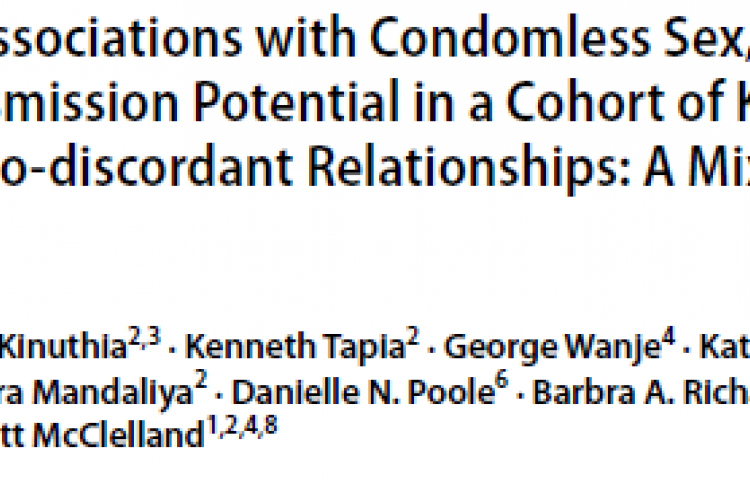A groundbreaking study led by Prof. Walter Jaoko from the Department of Medical Microbiology and Immunology and Prof. Scott McClelland, a visiting faculty member from the University of Washington, sheds new light on the complex interplay between fertility desires, condomless sex, antiretroviral adherence, and HIV transmission potential among Kenyan women living with HIV in serodiscordant relationships. The study, "Fertility Desire and Associations with Condomless Sex, Antiretroviral Adherence, and Transmission Potential in a Cohort of Kenyan Women Living with HIV in Sero-discordant Relationships: A Mixed Methods Study," was published in AIDS and Behavior in 2023.
Background
Sero-discordant relationships, in which one partner is HIV-positive and the other is HIV-negative, pose a unique challenge for HIV prevention. Understanding the factors contributing to HIV transmission risk in these relationships is crucial for designing effective prevention strategies. Fertility desires are particularly relevant in this context, as they can influence sexual behavior, condom use, and adherence to antiretroviral therapy (ART) – all of which have implications for HIV transmission.
Study Design and Methods
In this mixed-methods study, Eastment et al. investigated the associations between fertility desires and factors influencing HIV transmission potential, including condomless sex, ART adherence, and viral suppression. The study enrolled a cohort of Kenyan women living with HIV in serodiscordant relationships and employed quantitative and qualitative methods to explore the participants' experiences and perspectives.
Key Findings
The study revealed that a significant proportion of the women in the cohort desired to have children, which was associated with higher rates of condomless sex. This increased the risk of HIV transmission to their HIV-negative partners. Furthermore, fertility desires were linked to lower ART adherence, leading to suboptimal viral suppression and a higher potential for HIV transmission.
The qualitative findings provided insights into the reasons behind these associations. Women reported that the desire for children played a critical role in their decision to engage in condomless sex, despite being aware of the risks involved. Additionally, some women expressed concerns about the potential impact of ART on their fertility or the health of their unborn child, which led to non-adherence.
Implications for HIV Prevention
This study highlights the importance of addressing fertility desires among women living with HIV in sero-discordant relationships. HIV prevention strategies should consider the complex interplay between fertility desires, sexual behaviour, and ART adherence to develop tailored interventions that meet the unique needs of this population.
Healthcare providers should engage in open and supportive conversations with women about their fertility desires, providing accurate information about the risks and benefits of different reproductive options. In addition, interventions should aim to improve ART adherence and promote the use of pre-exposure prophylaxis (PrEP) for HIV-negative partners, thereby reducing transmission risk while still allowing for the possibility of achieving desired fertility outcomes.
Conclusion
The study by Prof. Jaoko, Prof. McClelland, and their team underscores the need for a holistic approach to HIV prevention in serodiscordant couples considering fertility desires. By addressing the complex factors influencing HIV transmission potential, it is possible to develop more effective strategies to curb the spread of HIV and improve the lives of those affected by it.
- Log in to post comments

